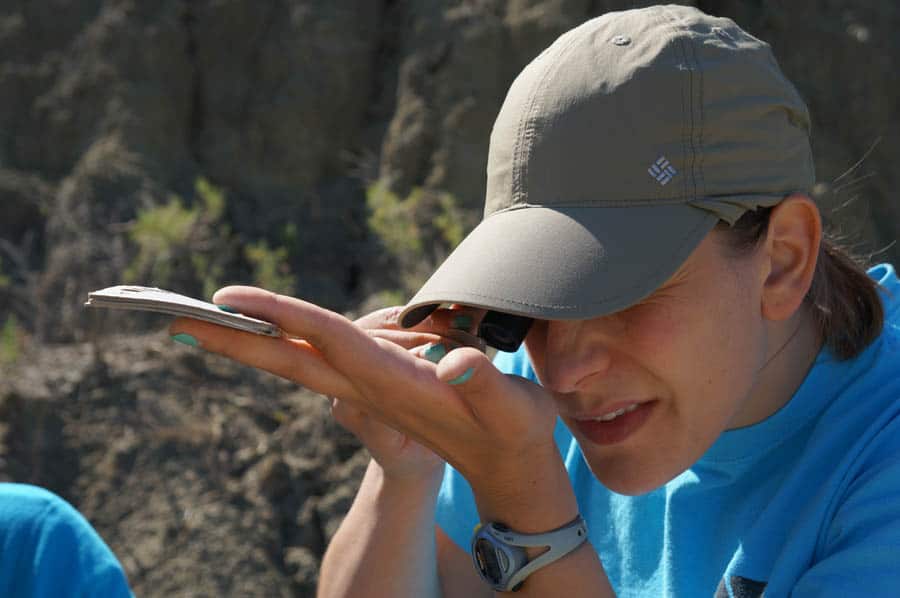An Amazing Experience for K-12 STEM Teachers

Last week, a group of 19 K-12 teachers joined paleontologists from the University of Washington in the badlands of Montana to dig for dinosaurs. The dinosaur dig was a success – several hundred pounds of everyone’s favorites, including Triceratops and T. rex, were excavated and hauled back to the Burke Museum of Natural History and Culture. The real success, though, was the impact on the teachers.
“I cannot begin to properly articulate my heartfelt thanks for the most amazing experience at the DIG Field School. I truly appreciated the opportunity to learn and gain a tremendous amount of knowledge along side all of the Field School instructors.”
– Jody
The DIG Field School is a real, active scientific research site. Paleontologists from UW and the Burke collect fossils and geologic information to study the extinction of dinosaurs and the rise of mammals. Teachers get hands-on instruction on using the equipment (like GPS, grain charts, and field notebooks) and methods (proper collection of fossils and data). They become part of the research crew, finding and identifying rocks and fossils with the pros (after a little bit of coaching and practice). Back at camp, teachers had a chance to discuss what they’d learned and experienced during the day, and how they could bring the excitement of doing real science into their classrooms.
The days were long and busy. We woke up early to get oriented for the day’s work and head out to the work sites. Work began with an overview of equipment and methods, and sometimes we got so excited about digging that we forgot to eat lunch. Nightly thunderstorms made sleeping iffy and the roads muddy, but I don’t think any of us would have rather sat through a lecture in a conference room.
Sometimes, as science educators, we get so busy lighting sparks in our students that we forget the educators need a spark every now and again, too.
Disclosure: The author is also a program assistant for the DIG Field School.















0 Comments
Leave a Comment
Your email address will not be published. All fields are required.